297. The
character of the kuhane
stations seems to have changed after Te Pou,
because from there we can locate most of them
on the map drawn by Métraux:
.jpg)
|
Pu Mahore |
Poko Uri |
Te Manavai |
Te Kioe Uri |
Te Piringa Aniva |
Te Pei |
Te Pou |
... The dream soul of Hau
Maka continued her journey
and went ashore on the (actual
Easter) Island. The dream soul
saw the fish Mahore, who
was in a (water) hole to spawn
(?), and she named the place 'Pu
Mahore A Hau Maka O Hiva'.
The dream soul climbed up and
reached the rim of the crater.
As soon as the dream soul looked
into the crater, she felt a
gentle breeze coming toward her.
She named the place 'Poko Uri
A Hau Maka O Hiva'. The
dream soul continued her search
for a residence for King
Matua.
The dream soul of Hau Maka
reached (the smaller crater)
Manavai and named the place
'Te Manavai A Hau Maka O Hiva'.
The dream soul went on and
reached Te Kioe Uri. She
named the place 'Te Kioe Uri
A Hau Maka O Hiva'.
The dream soul went on and came
to Te Piringa Aniva. She
named the place 'Te Piringa
Aniva A Hau Maka O Hiva'.
Again the dream soul went on her
way and reached Te Pei.
She named the place 'Te Pei A
Hau Maka O Hiva'. The dream
soul went on and came to Te
Pou. She named the place 'Te
Pou A Hau Maka O Hiva'.
|
Hua Reva |
Akahanga
|
Hatinga Te Kohe |
Roto Ire Are |
Tama |
One Tea |
Hanga Takaure |
Poike |
Pua Katiki |
The dream soul went on and came
to Hua Reva. She named
the place 'Hua Reva A Hau
Maka O Hiva'. The dream
soul went on and came to
Akahanga. She named the
place 'Akahanga A Hau Maka O
Hiva'.
The dream soul went on. She was
careless (?) and broke the
kohe plant with her feet.
She named the place 'Hatinga
Te Kohe A Hau Maka O Hiva'.
The
dream soul went on and came to
Roto Ire Are. She gave
the name 'Roto Ire Are A Hau
Maka O Hiva'. The dream soul
went on and came to Tama.
She named the place 'Tama',
an evil fish (he ika kino)
with a very long nose (he ihu
roroa). The dream soul went
on and came to One Tea.
She named the place 'One Tea
A Hau Maka O Hiva'. She went
on and reached Hanga Takaure.
She named the place 'Hanga
Takaure A Hau Maka O Hiva'.
The dream soul moved upward and
came to (the elevation) of
Poike. She named the place 'Poike
A Hau Maka O Hiva'. The
dream soul continued to ascend
and came to the top of the
mountain, to Pua Katiki.
She named the place 'Pua
Katiki A Hau Maka O Hiva'
...
Huareva is on
the southern coast at the border
between the domain of Marama
and that of Ngaure.
Akahanga is the name of the
cove on the opposite side of
Ngaure. But we cannot find Te Pei nor Te
Pou.
The movement of the dream soul
went along the southern shore of
the island towards the east, and
then up onto the peninsula
Poike (the Place Aloft) with Pua Katiki,
from there to continue on the northern
coast line towards the west and the
cove Anakena.
Due south of the cove of
Anakena was the cove
of Akahanga. This
suggests a possible
interpretation of Te Pei
and Te Pou (the Pillar)
as a line drawn between the
western and
eastern parts of the
island. I remember how such a
division was common in
Polynesia, for instance on the
island of Vao where the
'superior' (better) half was in the west
and the 'inferior' in the west:

The high ground on Poike
was given to the slaves:
... Hotu said to Teke,
'Look around for a suitable area
(maara) to settle the
Hanau Eepe and let
them work the fields!' Teke
took command of the Hanau
Eepe and went with them
to Poike. After he had
settled them there, Teke
said to the Hanau Eepe.
'Settle here, work, and keep
peace among yourselves (he
mee o mahamaha kina); let
this be the goal of every one of
you!' Then Teke assumed
royal powers (pahere
ariki) and passed them on to
Iko. Teke
installed the king; Iko
was (now) the king (ariki)
of the Hanau Eepe.
Teke called out to the
men, 'Iko is your king,
oh people (mahingo)!' The
Hanau Eepe
remained there. Teke
returned. (He) came to
Oromanga. - Name corrected;
alternative translation 'Along
came the adopted rat', kiore
ma(a)nga). - That was
Iko.
Twenty-five years ... (E: 84-85)
The month of "July was named
Anakena and in "July 17
the opening for the life-giving water from the
Urn of Aquarius was at the Full
Moon, i.e. at the place of DECEMBER 24:
|
ST JOHN'S DAY |
JUNE 25 |
26 (177 = 6 * 29 ½) |
27 |
 |
 |
 |
 |
|
Ga4-12 |
Ga4-13 (96) |
Ga4-14 |
Ga4-15 |
|
p Carinae (159.3) |
φ Hydrae (160.3) |
no star listed (161) |
VATHORZ POSTERIOR =
θ Carinae
(162.1),
PEREGRINI = μ
Velorum,
η Carinae (162.6) |
|
Aug 27 |
28 (240) |
29 (*161) |
30 |
|
°Aug 23 |
24 (236) |
25 (*157) |
26 |
|
'July 31 |
'Aug 1 |
2 (214) |
3 (*500) |
|
"July 17 (*118) |
Anakena 18 |
19 (200) |
20 |
|
NAKSHATRA DATES: |
|
CHRISTMAS EVE |
DEC 25 |
26 (360) |
27 |
|
η Aquarii (342.1), σ
Gruis (340.4),
SITULA (Water-jar) =
κ Aquarii
(342.7) |
ε Piscis Austrini
(343.5), ο Pegasi, β
Gruis (343.8) |
ρ Gruis (344.0),
MATAR (Fortunate
Rain) = η Pegasi
(344.2), η Gruis
(344.6), β Oct.
(344.7) |
λ Pegasi (345.0), ξ
Pegasi (345.1), ε
Gruis (345.3), τ
Aquarii (345.7), ξ
Oct. (345.8), μ
Pegasi (345.9) |
|
Febr 26 (365 + 57 =
422) |
2-27 |
28 (59) |
March 1 (*345) |
|
°Febr 22 |
TERMINALIA |
24 (55) |
25 |
|
'Jan 30 (*315) |
31 |
'Febr 1 (32) |
2 |
|
"Jan 16 (*301) |
17 |
18 (383) |
19 |
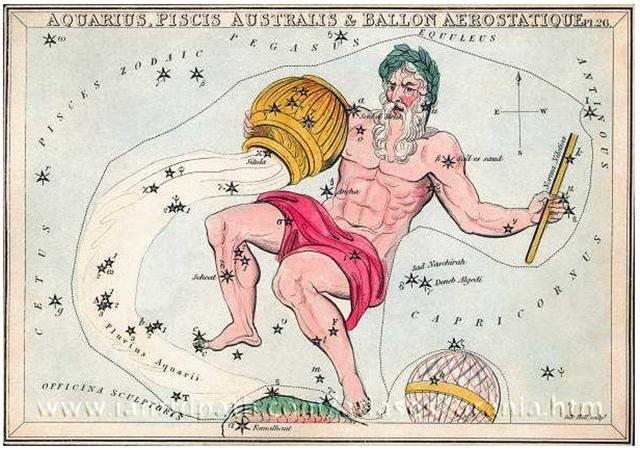
...
The Greek lettered
κ
(Situla) is at the
rim of the Urn, not
at the top of the
Nilometer, where
instead there is a
Latin letter k. The
meaning obviously is
for the viewer to
connect k with
κ,
to imagine the Rod
inserted into the
Urn (Tent) at the K
position ... |
The Nilometer in the left
hand of Aquarius seems to
have stretched
- horizontally and about 90° away
from the hour lines - from ε
to ν:
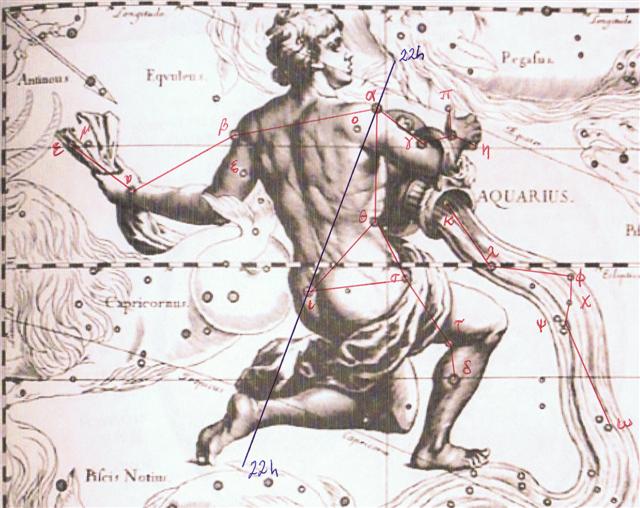
And at the time of
rongorongo ε (Albali) rose
with the Sun 314 (→
π) days after 0h:
|
Last
4 of
the
first
7
places
named
by
Makoi:
Possibly
these
places
were
alluding
also
to
the
change
from
the
Julian
spring
equinox
to
the
Gregorian
spring
equinox:
...
When
the
Pope
rearranged
the
day
for
spring
equinox
from
number
84
('March
25)
to
number
80
(ºMarch
21)
the
earlier
Julian
structure
was
buried,
was
covered
up (puo).
At
the
same
time
the
Pope
deliberately
avoided
to
correct
the
flow
of
Julian
calendar
days
for
what
he
may
have
regarded
as 4
unneccesary
leap
days
prior
to
the
Council
of
Nicaea.
Thus
his
balance
sheet
for
days
was
in
order.
The
day
numbers
counted
from
the
equinox
were
increased
with
4
and
this
was
equal
to
allowing
the
4
'unneccessary'
leap
days
to
remain
in
place.
But
he
had
moved
spring
equinox
to a
position
which
was
4
days
too
early
compared
to
the
ancient
model
...
These
'4
unneccessary
leap
days'
(prior
to
the
Council
of
Nicaea)
were
equal
in
number
to
the
precessional
distance
in
time
between
the
Pope
and
the
time
of
rongorongo.
The
Gregorian
calendar
could
therefore
be
easily
understood
by
the
Easter
Islanders.
The
Pope
had
created
a
'crooked
calendar'
but
since
his
time
the
precession
had
fixed
it
...
 |
|
MAY
25
(5-25) |
26
(*266) |
27 |
28
(348) |
 |
 |
 |
 |
|
Ga3-6 |
Ga3-7 |
Ga3-8 |
Ga3-9
(68) |
|
Āshleshā-9
(Embrace)
/
Willow-24
(Stag)
π¹
Ursa
Majoris,
δ
Hydrae (129.6),
AL
MINHAR
AL
SHUJĀ
= σ
Hydrae,
MUSEIDA
= π²
Ursae
Majoris
(129.9)
RAS
ALHAGUE
(α
Ophiuchi) |
Al
Nathrah-6
(Gap)
BEEHIVE
(Exhalation
of
Piled-up
Corpses)
= ε
Cancri,
η
Pyxidis
(130.4),
XESTUS
= ο
Velorum
(130.5),
ζ
Pyxidis
(130.7),
ASCELLUS
BOREALIS
= γ
Cancri,
β
Pyxidis
(130.9)
*89
=
*130.4
-
*41.4 |
Extended
Net-26a
(Ox)
/
Arkū-sha-nangaru-sha-shūtu-12
(Southeast
Star
in
the
Crab)
η
Hydrae
(131.0),
ASCELLUS
AUSTRALIS
= δ
Cancri
(131.4),
KOO
SHE
(Bow
and
Arrow)
= δ
Velorum
(131.6),
α
Pyxidis
(131.8),
ε
Hydrae
(131.9)
*90
=
*131.4
-
*41.4 |
ι
Cancri
(132.0),
ρ
Hydrae
(132.4)
*91
=
*132.4
-
*41.4 |
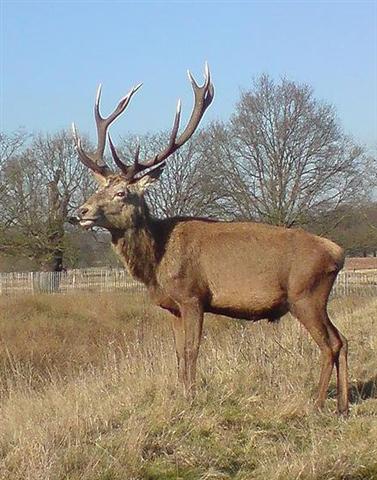
...
A
sidelight
falls
upon
the
notions
connected
with
the
stag
by
Horapollo's
statement
concerning
the
Egyptian
writing
of
'A
long
space
of
time:
A
Stag's
horns
grow
out
each
year.
A
picture
of
them
means
a
long
space
of
time.'
Chairemon
(hieroglyph
no.
15,
quoted
by
Tzetzes)
made
it
shorter:
'eniautos:
elaphos'.
Louis
Keimer,
stressing
the
absence
of
stags
in
Egypt,
pointed
to
the
Oryx
(Capra
Nubiana)
as
the
appropriate
'ersatz',
whose
head
was,
indeed,
used
for
writing
the
word
rnp
=
year,
eventually
in
'the
Lord
of
the
Year',
a
well-known
title
of
Ptah.
Rare
as
this
modus
of
writing
the
word
seems
to
have
been
-
the
Wörterbuch
der
Aegyptischen
Sprache
(eds.
Erman
and
Grapow),
vol.
2,
pp.
429-33,
does
not
even
mention
this
variant
- it
is
worth
considering
(as
in
every
subject
dealt
with
by
Keimer),
the
more
so
as
Chairemon
continues
his
list
by
offering
as
number
16:
'eniautos:
phoinix',
i.e.,
a
different
span
of
time,
the
much-discussed
'Phoenix-period'
(ca.
500
years)
... |
|
July
28 |
29
(*130) |
30 |
31
(212) |
|
°July
24 |
25 |
26
(*127) |
27
(208) |
|
'July
1 |
2 |
3
(*104) |
4
(185) |
|
"June
17
Te
Kioe
Uri |
18
Te
Piringa
Aniva |
19
(*90)
Te
Pei |
Te
Maro
20
(171
=
185
-
14)
Te
Pou |
|
CLOSE
TO
THE
FULL
MOON: |
|
NOV
24 |
25
(*249) |
26 |
27
(331) |
|
ROTANEV
= β
Delphini,
ι
Delphini
(312.3),
τ
Capricorni
(312.6),
κ
Delphini
(312.7),
SVALOCIN
= α
Delphini,
υ
Capricorni,
υ
Pavonis
(312.8) |
μ²,
μ¹
Oct.
(313.2),
DENEB
CYGNI
(Tail
of
the
Swan)
= α
Cygni
(313.5),
β
Pavonis
(313.6),
δ
Delphini
(313.8) |
Al
Sa’d
al
Bula'-21
(Good
Fortune
of
the
Swallower)
/
Dhanishta-24
(Most
Famous)
/
Girl-10
(Bat)
YUE
(Battle-Axe)
= ψ
Capricorni
(314.3),
GIENAH
CYGNI
= ε
Cygni,
η
Cephei
(314.5),
γ
Delphini
(314.6),
σ
Pavonis
(314.7),
ALBALI
= ε
Aquarii
(314.8) |
BATEN
ALGIEDI
(Belly
of
the
Goat)
= ω
Capricorni
(315.8) |
|
Jan
27 |
28
(393) |
29
(*314) |
30 |
|
°Jan
23 |
24 |
25
(*310) |
26 |
|
'Dec
31 |
'Jan
1 |
2 |
3
(*288) |
|
"Dec
17 |
18 |
19
(*273) |
20
(354) |
|
When
it
grew
light,
Makoi
arose
again.
He
went
off
to
further
explore
the
area.
He
went
along
and
came
to
the
'dark
rat'.
He
looked
around
and
said:
'Here
we
are
at
the
dark
rat
of
Hau
Maka'.
He
gave
it
the
name
Te
Kioe
Uri
A
Hau
Maka.
He
went
on
and
came
to
Te
Piringa
Aniva.
When
he
arrived
there,
he
looked
around
and
gave
the
name
Te
Piringa
Aniva.
He
went
on
and
came
to
Te
Pei,
looked
around,
and
said,
'Here
it
is!'
So
he
gave
the
name
Te
Pei
A
Hau
Maka.
He
went
on,
all
alone
he
went
on,
and
came
to
Te
Pou.
When
he
arrived
there,
he
looked
around
and
again
said,
'Here
it
is!'
and
gave
the
name
Te
Pou
A
Hau
Maka. |
|
For
some
reason
nothing
was
said
about
Te
Manavai,
which
in
the
journey
of
the
kuhane
came
between
Poko
Uri
and
Te
Kioe
Uri.
... The dream soul climbed up and reached the rim of the crater. As soon as the dream soul looked into the crater, she felt a gentle breeze coming toward her. She named the place 'Poko Uri A Hau Maka O Hiva'. The dream soul continued her search for a residence for King Matua. The dream soul of Hau Maka reached (the smaller crater) Manavai and named the place 'Te Manavai A Hau Maka O Hiva'. The dream soul went on and reached Te Kioe Uri. She named the place 'Te Kioe Uri A Hau Maka O Hiva' ...
...
Manavai
Hollow
where
rainwater
accumulates;
anciently,
small,
round
gardens,
preferably
situated
in
low
shady
spots,
where
the
mahute
tree
was
grown.
Vanaga.
1.
Brain.
2.
Valley,
ravine,
river,
torrent,
brook;
manavai
miro,
orchard,
Mq.:
manavai,
valley,
brook.
Ta.:
anavai,
river,
brook.
It
scarcely
appears
that
these
are
fully
coordinate.
In
Tahiti
anavai
has
a
clear
etymology,
ana
meaning
the
bed
of a
stream.
In
Rapanui
and
in
the
Marquesas
mana
most
readily
associates
with
maga,
as
water
in a
forked
bed.
Churchill
...
However,
Manuscript
E
seems
to
offer
an
explanation
in
the
way
Makoi
remembered
how
he
documented
the
name:
...
I
wrote
(ta)
Te
Manavai
A
Hau
Maka
on
the
surface
of a
banana
leaf
(kaka),
and
this
is
how
I
left
it
|
When the
Full Moon
was at
Albali
(*314) then
the Sun had
reached the
Southeast
Star in the
Crab where
the Extended
Net was
beginning -
as if it had
been a cover
over the
death of the
Sun at the
solstice:

This
exceptional
station
stretched
(covered)
210
- 183 =
27 right
ascension
days all the
way to
the 4th
Son
behind
the
King:
| Tama. 1. Shoot (of plant), tama miro, tree shoot; tama tôa, shoot of sugarcane. 2. Poles, sticks, rods of a frame. 3. Sun rays. 4. Group of people travelling in formation. 5. To listen attentively (with ear, tariga, as subject, e.g. he tama te tariga); e-tama rivariva tokorua tariga ki taaku kî, listen carefully to my words. Tamahahine, female. Tamahine (= tamahahine), female, when speaking of chickens: moa tamahine, hen. Tamâroa, male. Vanaga. 1. Child. P Pau.: tama riki, child. Mgv.: tama, son, daughter, applied at any age. Mq.: tama, son, child, young of animals. Ta.: tama, child. Tamaahine (tama 1 - ahine), daughter, female. Tamaiti, child P Mq.: temeiti, temeii, young person. Ta.: tamaiti, child. Tamaroa, boy, male. P Mgv.: tamaroa, boy, man, male. Mq.: tamaóa, boy. Ta.: tamaroa, id. 2. To align. Churchill. In the Polynesian this [tama na, father in the Efaté language] is distinguished from táma child by the accent tamā or by the addition of a final syllable which automatically secures the same incidence of the accent, tamái, tamana ... Churchill 2 |
| 22 |
JUNE 20 (*91) |
SOLSTICE |
22 |
23 (174) |
 |
 |
 |
 |
| Ga4-8 |
Ga4-9 (92) |
Ga4-10 |
Ga4-11
(Tama) |
| ALGIEBA = γ Leonis, q Carinae (155.5) |
TANIA AUSTRALIS = μ Ursae Majoris (156.0), GHOST OF JUPITER = NGC3242 Hydrae (156.8) |
Extended Net-26b (Ox)
μ Hydrae (157.1) |
Maru-sha-arkat-Sharru-15 (4th Son behind the King) SHIR = ρ Leonis (158.9 = 131.9 + 27.0) |
| Aug 23 |
24 (4 * 59) |
25 (*157 = *314 / 2) |
26 |
| °Aug 19 |
20 (232) |
21 (*153) |
22 |
| 'July 27 (*128) |
28 |
29 (210) |
30 |
| "July 13 (*114) |
14 |
15 (196) |
16 |
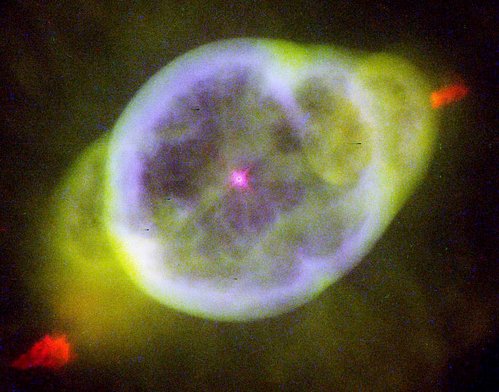 |
|
CLOSE TO THE FULL MOON: |
| DEC 20 (354) |
SOLSTICE (*275) |
22 |
23 |
| Al Sa'ad al Ahbiyah-23 / Shatabisha-25
ε Oct. (338.1), ρ Aquarii (338.2), 2/365 Lac. (338.5), SADACHBIA (Lucky Star of Hidden Things) = γ Aquarii (338.6), π Gruis (338.9) |
β/172 Lac. (339.2), 4/1100 Lac. (339.4), π Aquarii (339.5)
CASTOR (α Gemini)
|
δ Tucanae (340.1), ρ Cephei (340.2), ν Gruis (340.3), ζ Aquarii, δ Gruis (340.4), 5/1100 Lac. (340.7), σ Aquarii, 6/650 Lac. (340.9)
PROCYON (α Canis Minoris)
|
υ Oct. (341.0), α/91 Lac. (341.1), HOMAN = ζ Pegasi, β Piscis Austrini (341.2), ν Tucanae (341.5), υ Aquarii (341.9) |
| Febr 22 (53) |
TERMINALIA |
24 (*340) |
25 |
| °Febr 18 |
19 (50) |
20 (*336) |
21 |
| 'Jan 26 |
27 (392) |
28 |
29 (*314) |
| "Jan 12 |
13 (378) |
14 |
15 (*300) |
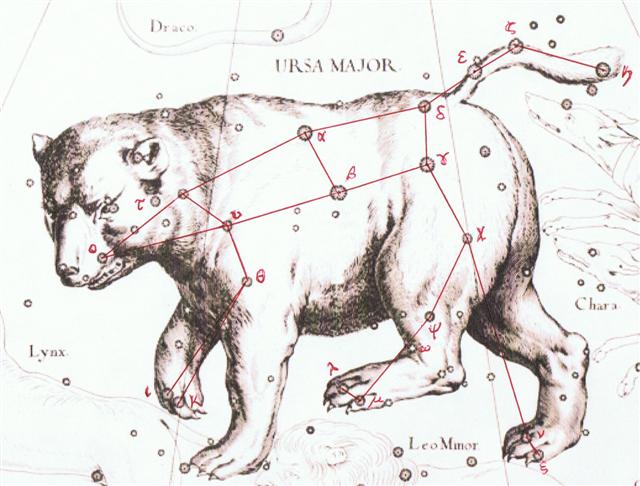
219 -
210 = 9 days
later
the Sun
was at
the
'Guards',
Merak (α
Ursae
Majoris)
and
Dubhe
(β),
with the
beginning
of the
Pegasus
Square
at the
Full
Moon:
| 4 |
JUNE 28 |
29 (180) |
SIRIUS |
JULY 1 (*102) |
 |
 |
 |
 |
| Ga4-16 |
Ga4-17 (100) |
Ga4-18 |
Ga4-19 |
| ν Hydrae (163.1) |
no star listed (164)
ALTAIR (α Aquilae)
|
Wings-27 (Snake) η Oct. (165.4), ALKES = α Crateris (165.6)
*124 = *165.4 - 41.4 |
ANA-TIPU-4 (Upper-side-pillar - where the guards stood) MERAK (Loin) = β Ursae Majoris (166.2), DUBHE (Bear) = α Ursae Majoris (166.7) |
| Aug 31 |
Sept 1 |
2 (*165) |
3 (246) |
| °Aug 27 |
28 |
29 (*161) |
30 (242) |
| 'Aug 4 (216) |
5 (*137) |
6 |
7 |
| "July 21 |
22 / 7 |
Anakena 23 (204) |
24 (*125) |
|
CLOSE TO THE FULL MOON: |
| DEC 28 |
29 |
30 (364) |
31 (*285) |
| ι Cephei (346.0), λ Aquarii, γ Piscis Austrini, σ Pegasi (346.5) |
SCHEAT AQUARII = δ Aquarii (347.0), ρ Pegasi (347.2), δ Piscis Austrini (347.4), FOMALHAUT (Mouth of the Fish) = α Piscis Austrini, τ Gruis (347.8) |
FUM AL SAMAKAH (Mouth of the Fish) = β Piscium (348.3), ζ Gruis (348.5), ο Andromedae (348.9) |
Al Fargh al Mukdim-24 (Fore Spout) / Purva Bhādrapadā-26 (First of the Blessed Feet) / House-13 (Pig) SCHEAT PEGASI = β Pegasi, π Piscis Austrini (349.3), κ Gruis (349.4), MARKAB PEGASI = α Pegasi (349.5)
*308 = *349.4 - 41.4 |
| March 2 |
3 |
4 (*348) |
5 (64) |
| °Febr 26 |
27 |
28 (*344) |
°March 1 (60) |
| 'Febr 3 |
4 |
5 (36) |
6 (*322) |
| "Jan 20 |
21 |
22 |
23 (*308) |
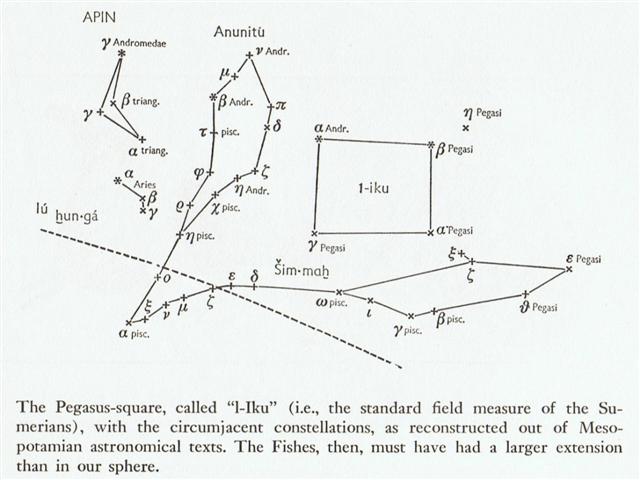 |
The
Explorers
had rested
for 5
days in
Hanga
Hoonu
and then
they had reached
Rangi
Meamea
in
Anakena
23.
Before
that they had
gone
from
Hanga
Takaure
in
Anakena
18
after
having
rested
for 7
days in
this so
called 'Bay
of
Flies'.
| 19 |
20 |
21 |
22 |
23 |
24 |
JUNE 25 |
26 |
27 |
28 |
29 |
JUNE 30 (181) |
| 12 |
13 |
14 |
15 |
16 |
17 |
Anakena 18 |
19 |
20 |
21 |
22 |
Anakena 23 (204) |
|
Hanga Takaure |
Hanga Hoonu |
But
taka-ure
basically
meant
not a
horse-fly
but the
completion
of a
cycle -
through
a female
agent
capable
of
regenerating
(in
contrast
to man
who
could
not
carry
any off-spring).
| Takaure.
Fly; horse-fly. Vanaga. A fly; takaure iti, mosquito; takaure marere ke, swarm. Churchill. 
|
| Taka. Taka, takataka. Circle; to form circles, to gather, to get together (of people). Vanaga. 1. A dredge. P Mgv.: akataka, to fish all day or all night with the line, to throw the fishing line here and there. This can only apply to some sort of net used in fishing. We find in Samoa ta'ā a small fishing line, Tonga taka the short line attached to fish hooks, Futuna taka-taka a fishing party of women in the reef pools (net), Maori takā the thread by which the fishhook is fastened to the line, Hawaii kaa in the same sense, Marquesas takako a badly spun thread, Mangareva takara a thread for fastening the bait on the hook. 2. Ruddy. 3. Wheel, arch; takataka, ball, spherical, round, circle, oval, to roll in a circle, wheel, circular piece of wood, around; miro takataka, bush; haga takataka, to disjoin; hakatakataka, to round, to concentrate. P Pau.: fakatakataka, to whirl around. Mq.: taka, to gird. Ta.: taa, circular piece which connects the frame of a house. Churchill. Takai, a curl, to tie; takaikai, to lace up; takaitakai, to coil. P Pau.: takai, a ball, to tie. Mgv.: takai, a circle, ring, hoop, to go around a thing. Mq.: takai, to voyage around. Ta.: taai, to make into a ball, to attach. Churchill. |
| Ure. 1. Generation; ure matá, warlike, bellicose generation (matá, obsidian, used in making weapons). 2. Offspring; brother; colleague i toou ure ka tata-mai, your colleague has turned up. 3. Friendship, friendly relationship; ku-ké-á te ure, they have become enemies (lit.: friendship has changed). 4. Penis (this definition is found in Englert's 1938 dictionary, but not in La Tierra de Hotu Matu'a). Ure tahiri, to gush, to spurt, to flow; e-ure tahiri-á te toto, blood is flowing in gushes. Ure tiatia moana, whirlwind which descend quickly and violently onto the ocean; whirlpool, eddy. Vanaga. Penis; kiri ure, prepuce, foreskin. P Pau., Mgv., Ta.: ure, penis. Ureure, spiral. Ta.: aureure, id. Urei, to show the teeth. Mgv.: urei, to uncover the eye by rolling back the lids. Churchill. Pau.: Ureuretiamoana, waterspout. Ta.: ureuretumoana, id. Churchill. H. Ule 1. Penis. For imaginative compounds see 'a'awa 1, 'aweule, ulehala, ulehole, ulepa'a, ulepuaa, ule'ulu. Kū ka ule, he'e ka laho, the penis is upright, the scrotum runs away (refers to breadfruit: when the blossom (pōule) appears erect, there will soon be fruit). 2. Tenon for a mortise; pointed end of a post which enters the crotch of a rafter (also called ma'i kāne). Ho'o ule, to form a tenon or post for the crotch of a rafter. 3. To hang. Wehewehe. |
...
There is
a couple
residing
in one
place
named
Kui
and
Fakataka.
After
the
couple
stay
together
for a
while
Fakataka
is
pregnant.
So they
go away
because
they
wish to
go to
another
place -
they go.
The
canoe
goes and
goes,
the wind
roars,
the sea
churns,
the
canoe
sinks.
Kui
expires
while
Fakataka
swims.
Fakataka
swims
and
swims,
reaching
another
land.
She goes
there
and
stays on
the
upraised
reef in
the
freshwater
pools on
the
reef,
and
there
delivers
her
child, a
boy
child.
She
gives
him the
name
Taetagaloa.
When the
baby is
born a
golden
plover
flies
over and
alights
upon the
reef.
(Kua
fanau lā
te pepe
kae lele
mai te
tuli oi
tū mai i
te papa).
And so
the
woman
thus
names
various
parts of
the
child
beginning
with the
name
'the
plover'
(tuli):
neck (tuliulu),
elbow (tulilima),
knee (tulivae).
They go
inland
at the
land.
The
child
nursed
and
tended
grows
up, is
able to
go and
play.
Each day
he now
goes off
a bit
further
away,
moving
some
distance
away
from the
house,
and then
returns
to their
house.
So it
goes on
and the
child is
fully
grown
and goes
to play
far away
from the
place
where
they
live. He
goes
over to
where
some
work is
being
done by
a father
and son.
Likāvaka
is the
name of
the
father -
a
canoe-builder,
while
his son
is
Kiukava.
Taetagaloa
goes
right
over
there
and
steps
forward
to the
stern of
the
canoe
saying -
his
words
are
these:
'The
canoe is
crooked.'
(kalo
ki ama).
Instantly
Likāvaka
is
enraged
at the
words of
the
child.
Likāvaka
says:
'Who the
hell are
you to
come and
tell me
that the
canoe is
crooked?'
Taetagaloa
replies:
'Come
and
stand
over
here and
see that
the
canoe is
crooked.'
Likāvaka
goes
over and
stands
right at
the
place
Taetagaloa
told him
to at
the
stern of
the
canoe.
Looking
forward,
Taetagaloa
is
right,
the
canoe is
crooked.
He
slices
through
all the
lashings
of the
canoe to
straighten
the
timbers.
He
realigns
the
timbers.
First he
must
again
position
the
supports,
then
place
the
timbers
correctly
in them,
but
Kuikava
the son
of
Likāvaka
goes
over and
stands
upon one
support.
His
father
Likāvaka
rushes
right
over and
strikes
his son
Kuikava
with his
adze.
Thus
Kuikava
dies.
Taetagaloa
goes
over at
once and
brings
the son
of
Likāvaka,
Kuikava,
back to
life.
Then he
again
aligns
the
supports
correctly
and
helps
Likāvaka
in
building
the
canoe.
Working
working
it is
finished.
The
completion
of the
cycle in
Anakena
18
coincided
with
'August
1 and
with
JUNE 25,
the day
after St
John's
Day.
Here a
state of
emptiness
was
illustrated:

In Roman
times
and
counted
from the
northern
winter
solstice
this had
been day
7 * 32 =
224 = 84
+ 140.

|
.jpg)























